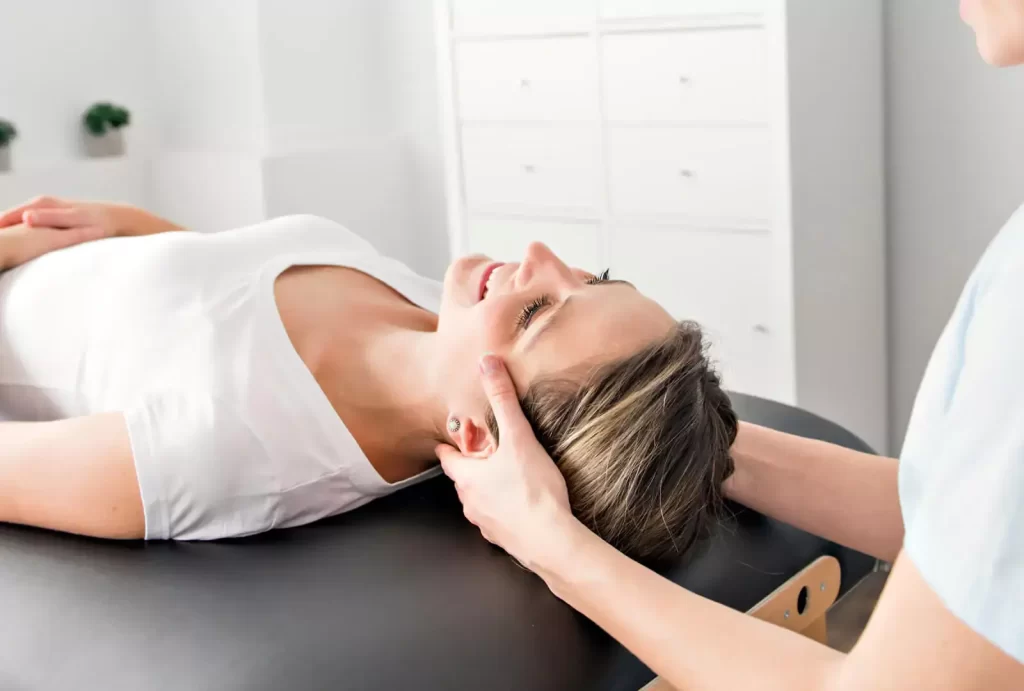Vertigo/Dizziness
What is Vertigo?
Vertigo is characterized by a sensation of dizziness or spinning. It occurs when there is an issue with the inner ear’s vestibular system, responsible for maintaining our balance. There are two main types of vertigo:
- Subjective vertigo: This is when you feel as if you yourself are in motion.
- Objective vertigo: This is when you perceive that the surrounding environment is moving.
Vertigo can also result from disruptions in specific brain regions or nerves that supply the ear. Therefore, it’s crucial to seek medical advice when experiencing vertigo symptoms. Physiotherapy, particularly when administered by experienced specialists like those at primecare can be highly effective in alleviating vertigo symptoms and treating complex cases.

How is vertigo diagnosed?
Diagnosing vertigo involves various methods, and the choice of diagnostic tests depends on the underlying cause of the condition. Typically, a range of tests is recommended to ensure an accurate diagnosis and effective treatment. These tests may encompass:
- Thoroughly documenting the history of your symptoms.
- Evaluating your balance through specific tests.
- Conducting Hallpike’s maneuver, a test designed to induce temporary vertigo symptoms.
- Assessing your hearing capabilities through hearing tests.
- Examining your eye function.
- Conducting blood tests.
- Employing CT/MRI scans for detailed imaging.
Benign Paroxysmal Positional Vertigo (BPPV or BPV)
Benign Paroxysmal Positional Vertigo (BPPV or BPV) is a disorder of the inner ear that affects individuals’ sense of balance especially in older people.
Benign: means not serious cause
Paroxysmal: refers to the fact that dizziness comes in sudden short bursts usually lasting only few seconds
Positional: meaning onset is induced by change in position
Vertigo: is the medical name for Spinning sensation felt
Symptoms of BPV
- The main symptom is intense dizziness(vertigo) which lasts for 10- 20 seconds, but no longer than a minute.
- It is often associated with imbalance or unsteadiness during walking and nausea. The nausea may last an hour or so even though the vertigo lasts few seconds.
- Symptoms are provoked by a change in head position, for example from rolling over in bed, bending down or looking up in a cupboard, lying down from an upright position, sudden head movements etc.
- In most cases, the symptoms resolve in a few weeks or months
Causes/ Etiology
- The most common cause of BPPV is idiopathic.
- However, degenerative changes of the vestibular system in the inner ear as one ages can contribute to potential cause of BPPV.
- Damage caused by an inner ear disorder
- Head injury
As part of the vestibular system, there are calcium carbonate crystals (known as otoconia), which are normally attached in a thick jelly like substance. In cases of BPPV, these crystals can detach from the jelly like substance and migrate to any of the three semicircular canals. Each ear has three semi circular canals and there job is to detect which direction your head is moving in. Once inside one of the three canals, the tiny crystal particles then move around in the canal. The particles brush along the delicate hairs that line the semicircular canal. This in turn sends messages down the vestibular nerve. These extra nerve messages sent from the affected ear conflict with the normal messages sent from the other unaffected ear. The brain becomes very confused and reacts by causing intense dizziness.
The posterior semicircular canal is the canal usually affected and is generally seen in only one ear.
Diagnosis of BPV
- Diagnosis is based on the patient’s history and symptoms
- By performing positional test called the Dix-Hallpike manoeuvre. The clinical test involves patient sitting on a couch, and then the therapist will lie patient back supporting the patient’s head and moving in certain directions throughout. These set movements trigger an episode of vertigo if the diagnosis is BPPV.
Vestibular Treatment & Rehabilitation
The most common treatment option is called an ‘Epley manoeuvre ‘or canalith repositioning manoeuvre. Physiotherapist can treat this condition by moving patient’s head through a number of different head and body positions holding each position for about 30 seconds. The aim is to re-position or relocate the crystals out of the semicircular canals, where they will be re absorbed by patient’s body. It is normal for the patient to feel dizziness symptoms during or residually lasting short term following the treatment.
Post Epley manoeuvre the following recommendations are advised in order to allow the otoconia to settle into their new position in the vestibule.
- Do not lie flat for 48 hours- use two pillows or sleep sitting in a chair
- Do not lie on the affected side for a week
- Try and avoid bending over, standing up too quickly or moving the head in jerky quick movements for a week.
Many individuals have complete resolution of symptoms in one to three treatments. A home exercise program is usually provided to guide self-management and reduce the chances of dizziness or vestibular symptoms associated with BPPV from returning anytime in the future.

Address
909 South Road, Clarence Gardens, SA 5039, Australia
Contact Us
- (08) 8297 3266
- office@primecarephysio.com.au
Address
909 South Road
Clarence Gardens
SA 5039
Copyright © 2023 Prime Care Physiotherapy & Pilates Studio








